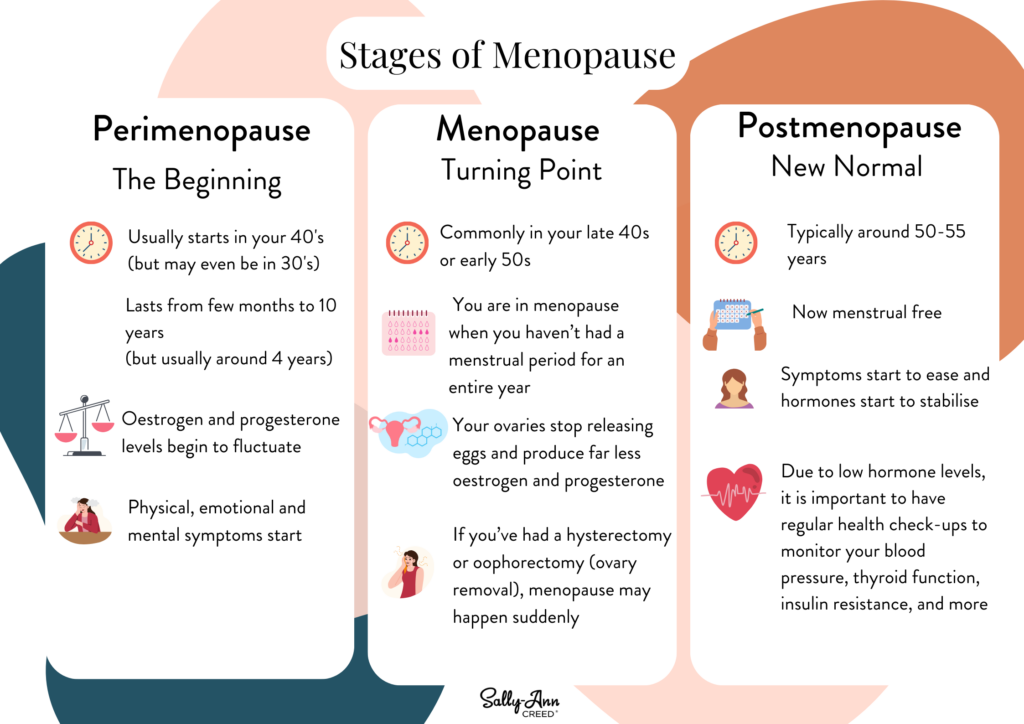Menopause is a completely natural biological process that every woman will eventually experience. It’s a hormonal shift where your body transitions to a new normal, following the end of your reproductive years. Around 25 million people experience menopause each year. Even though it impacts half the population, awareness and understanding of menopause are still quite limited.
At Sally-Ann Creed, we empathise strongly with anyone going through menopause. Many of the women in our business have gone through, or are going through, this transition at the moment, and we know how important it is to have a trusted source of information and advice at hand.
The timing and duration of menopause differ for each individual, there’s no set path or “correct” way to go through it. In some cases, menopause can also be triggered by surgery or damage to the ovaries.
Before we start on the different stages of menopause, lets go through some pretty important terminology:
- Early menopause happens when menopause begins before the age of 45, affecting about 5% of women. This can occur naturally or as a result of certain medical treatments, such as cancer therapies or surgeries that remove the ovaries.
- Premature menopause, also called Premature Ovarian Insufficiency- occurs before the age of 40. It may happen due to genetics, lifestyle factors or medical interventions. Some possible risk factors include a family history of early menopause, smoking, autoimmune diseases, infections like mumps or undergoing surgery. It affects approximately 1 in 100 people under 40, 1 in 1000 under 30, and 1 in 10000 under 20.

1. Perimenopause: The beginning of the journey.
🌸 Perimenopause takes place in the years leading up to menopause.
🌸 It usually starts in your 40s, although some women may enter perimenopause in their 30s.
🌸 This can last anywhere from a few months to several years, with the average duration being around four years.
🌸 During this transition stage, your oestrogen and progesterone levels begin to fluctuate, and the drop in oestrogen in particular can cause a variety of physical and emotional changes.
2. Menopause- The turning point.
🌸 You have reached actual menopause when you haven’t had a menstrual period for an entire year, which usually happens in your late 40s or early 50s.
🌸 At this point, your ovaries have stopped making eggs and significantly reduced their production of oestrogen and progesterone. Once you’ve reached this milestone, you enter postmenopause, which lasts for the rest of your life.
3. Postmenopause- Your new normal.
🌸 The good news is that menopause symptoms usually start to ease in this stage, although some might linger for a while.
🌸 It’s important to know that because of your significantly lower levels of oestrogen and progesterone, you’re at higher risk of health conditions like osteoporosis, cardiovascular disease and bladder issues like urinary incontinence and urinary tract infections.
If you’d like to learn more about menopause, consider downloading our new What The Menopause? guide. It’s full of helpful information, tips, and helpful advice on how to manage this wonderfully natural part of life.








